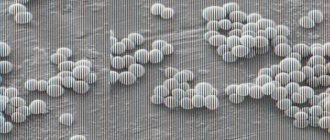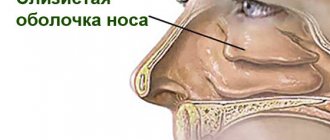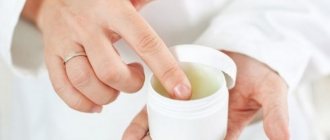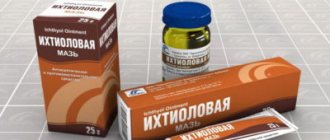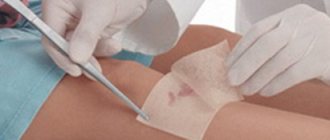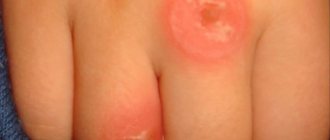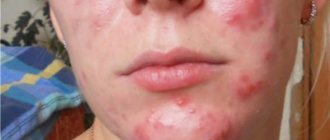The area of the nasolabial triangle, nose, lips is a zone of dangerous localization of boils. Therefore, a boil on the nose requires complex treatment, since there is a high probability of serious complications. The disease develops quickly and can cause serious consequences.
The formation of boils on the nose is a dangerous matter.
Causes of an abscess
The formation of a boil in any place on the body occurs due to the fault of pathogenic bacteria - staphylococci and streptococci.
Normally, they live on the skin of every person in small quantities (from 10 to 30%). However, when the body's protective response decreases, bacteria begin to multiply rapidly, causing the formation of an abscess.
Both external and internal causes can contribute to the appearance of an abscess.
External factors include:
- Damage to the mucous membrane. The nasal mucosa is a very delicate area and is often subject to injury when cleaning the nasal passages. Doing this with dirty hands and overgrown nails can introduce not only cocci, but also other dangerous infections, nasal fungus.
- Hair plucking. Instead of a safety trimmer, curling irons are often used. The procedure not only brings discomfort and pain, but also opens the door to infection. Each plucked hair is nothing more than a micro-wound. Until regeneration occurs, it will be susceptible to bacterial attack.
- Dysfunction of the nasal mucosa. The mucus in the nose itself is a protection against infections. After using medicinal drops, with increased dry air or a change in climate, the functioning of the mucous membrane may change. Reduced protection causes bacterial damage.
- Improper functioning of the sebaceous glands. Excess sebum becomes an ideal breeding ground for bacteria. The vestibule of the nose, nasolabial triangle, wing of the nose, nostril are the most common areas of damage for this reason.
Internal problems include:
- weakened immunity after viruses and bacteria;
- inflammation of the sinuses, bacterial infections of the nasopharynx (sinusitis, sinusitis, tonsillitis, sore throat);
- blood diseases, endocrine disorders (anemia, diabetes mellitus);
- spring vitamin deficiency, food poor in vitamins;
- oncological diseases;
- hypothermia of the body;
- hormonal changes, including during adolescence and menopause.
The one-time appearance of a boil is not a reason to fall into attacks of hypochondria. However, repeated or multiple inflammations are a signal for a mandatory visit to the doctor.
Which doctor should I contact?
A boil in the nose is a formation, the appearance of which requires a visit to the doctor. Diagnosis of a boil is the responsibility of an otolaryngologist (ENT). The specialist conducts a survey and prescribes current treatment.
When collecting anamnesis, the doctor takes into account the reasons that could cause the boil, as well as concomitant pathologies. Additionally, it is necessary to tell the otolaryngologist about all the symptoms that bother the person.
To clarify the diagnosis, the following methods may be prescribed:
- examination of the nasal cavity (rhinoscopy);
- Complete blood count (CBC) – allows you to detect inflammation;
- culture for streptococcus and staphylococcus;
- X-ray of the facial skeleton;
- magnetic resonance imaging (MRI) or computed tomography (CT) of the face - procedures are performed when the diagnostic value of x-rays is low.
You should urgently visit a doctor if you have any of the following signs:
- the core of the boil does not form within 3 to 4 days from the moment the first symptoms appear;
- the formation causes severe pain;
- a lot of pus has accumulated under the skin;
- the person’s well-being deteriorates;
- body temperature rose sharply;
- for several days no changes occur in the boil;
- the boil reappeared.
Symptoms
The first sign of a boil is itching and redness. However, at the initial stage there may be no pain. Patients also experience slight dryness of the skin caused by a disruption in its supply.
Gradually (over the course of a day), pain and tingling are added to the scratching. You can already feel tactilely that a boil has arisen.
Unpleasant symptoms may intensify significantly. Against the background of inflammation in the nasal area, an increase in temperature is often observed.
Symptoms are especially pronounced at an early age. The child’s temperature rises to 38⁰C, lethargy, weakness, and loss of appetite appear.
The skin under the boil swells and turns red. Due to the many nerve endings on the face, pain is felt not only at the localization site, but also radiates to nearby areas; discomfort is felt during facial movements, speech, frequent and deep breathing when moving the wings of the nose.
Soreness occurs not only due to inflammation of the tissues, but also due to the tension of the skin during the maturation of the boil.
One of the accompanying symptoms of a boil on the nose is headache. Enlargement of the cervical lymph nodes may also be noted.
The addition of symptoms of intoxication and hyperthermia may indicate the development of complications and the transition of inflammatory processes to other tissues.
A particularly dangerous sign is elevated temperature after the boil opens. This condition requires medical attention.
You will find the causes of development, main symptoms and signs, treatment methods, as well as photos of seborrhea of the scalp in this material.
Detailed instructions for using Belogent ointment are presented in this publication.
You can find out how to treat a boil on the eye here: https://udermatologa.com/zabol/pio/fur/chirey-na-veke-glaza-foto-lechenie/
How to recognize the disease
To properly provide assistance, you need to be able to distinguish a boil from ordinary pimples and carbuncles.
- Pimple - small pustular diseases on the surface of the skin, have whitish or yellowish heads, practically painless.
- Carbuncle is a purulent-necrotic disease with deep damage to the dermis. The carbuncle has several rods; at the site of opening, a deep, slowly healing ulcer is formed.
A furuncle differs from a pimple in that it involves deeper damage to the layers of the skin and is characterized by swelling, pain, and redness. In the later stages, pus appears and a rod forms.
Only a dermatologist or otolaryngologist, having examined the condition of the patient’s skin in the area of the nasolabial triangle, can make a correct diagnosis, prescribe adequate treatment, and warn about the possible negative consequences of an insufficiently cured or advanced disease.
Stages and pathogenesis
There are several stages in the development of a boil on the nose:
- Stage 1. Formation of infiltrate. Characterized by redness, tingling and slight pain. The skin around the future boil is stretched and swelling is observed. During this period, there is an attack on the hair follicle by coccal bacteria and gradual damage to surrounding tissues.
- Stage 2. Accumulation of pus. After a few days (usually up to 3 days), an “army” of dead neutrophils accumulates around the hair follicle. In the fight against staph infection, immune cells turn into purulent masses. At the second stage, the movement of pus inside the boil is already felt. However, the necrotic center and head of the abscess have not yet formed. Pain sensations are at their peak.
- Stage 3. Maturation of the boil. The skin over the boil brightens and seems to melt. This sign indicates an approaching resolution of the abscess. Pain decreases, pus becomes thicker.
- Stage 4. Resolution of the abscess. The final stage of the disease can occur either arbitrarily (the boil bursts on its own) or may require outside intervention (opening by a doctor). Along with the pus, the necrotic rod and blood particles come off. Pain in the area of the boil, headache, and fever gradually subside.
- Stage 5. Healing. After the wound is completely freed from traces of pus, it heals. The latter can last from several days to a week. Small boils can leave behind minor temporary pigmentation, larger ones will leave marks in the form of scars.
Treatment at home
If the painful boil is relatively small in size and appeared in the nose quite recently, you can get rid of the characteristic growth with purulent contents using alternative methods. Consult with an otolaryngologist first. If the patient does not have an allergic reaction to the herbal components of the recipes presented below, the following folk remedies prepared at home can serve as an auxiliary treatment for the boil:
- You need to mix onion and aloe juice in equal proportions, then mix the composition and rub it on the inflamed abscess. It is recommended to repeat the procedure in the morning and evening until the boil disappears.
- Mix 20 g of dried calendula leaves with petroleum jelly until a homogeneous mass is formed. The resulting cream is required to regularly lubricate the pathology site in the nose for several days in a row. The course of treatment is 10–14 days.
- Soak gauze with raw potato juice, make a compress and place it on the inflamed boil until the tissue is completely dry. The course of treatment is 7 – 10 procedures.
Photo of boils on the nose
Diagnostics
Early diagnosis will help you quickly get rid of a boil in the nose. It is important to distinguish a boil from other diseases with a similar clinical picture. These include herpes in the nose, sycosis, fungal infection, acne.
Due to the fact that the area inside the nose is difficult to access, it will be necessary to consult a doctor. The internal abscess is easy to examine using special ENT equipment.
It is not difficult to make a diagnosis at home when a boil is visible on the tip of the nose or wings of the nose, but you should not solve the problem yourself. It is safer to treat a boil under the supervision of a doctor.
In addition to examining and interviewing the patient, the doctor will prescribe a number of tests that will help determine the cause of the abscess:
- general blood analysis;
- sugar level analysis;
- bacterial culture to determine the causative agent of the disease;
- stool analysis for the presence of parasites.
If necessary, additional research methods are used - analysis of hormonal levels, tumor markers (if malignant tumors are suspected).
Features of the treatment of boils in children
Since the course of such a disease in a child’s nose is more acute, only a doctor should treat the boil. A child's temperature can be very high. As a result, general intoxication of the body quickly develops, which can lead to serious consequences.
The course of treatment for boils in children is the same as in adults. Antibiotics are used for therapy, the surface of the abscess is treated with antiseptic compounds, and anti-inflammatory ointments are applied. In some cases, surgical intervention may be required to treat a boil in a child.
How to treat a boil inside the nose
If a boil appears in the nose, you should contact an otolaryngologist. However, treatment recommendations can also be obtained from a physician or dermatologist.
A chiryak in the nose requires immediate treatment. This is due, first of all, to the fact that the blood supply to the nose is directly connected to the brain and any delay is fraught with inflammatory processes in the central nervous system.
First actions
The most important thing is to ensure complete sanitation of the affected area. Clear the sinuses of mucus and accumulated secretions.
This must be done delicately so as not to squeeze the boil and provoke the release of pus inside. Use a weak saline solution and a syringe.
The affected area is carefully treated with an antiseptic solution. For these purposes, ethyl alcohol, fucorcin, and brilliant green are used.
The liquid should be applied pointwise to the area of the boil so as not to dry out the nasal mucosa. You can also apply an antiseptic to the external boil.
Ointments
The most common and effective method remains treatment with ointments. A patch, previously lubricated with a thick layer of medication, is placed on the bridge of the nose and tip of the nose.
What to do if the abscess is located inside the nose? Then the ointment is introduced into the nasal cavity with pushing movements, using a cotton swab.
To inhibit bacteria, use “Ichthyol ointment”, “Levomekol”. The ointment has a “pulling” effect. Vishnevsky.
Other antibacterial drugs in the form of ointments for the treatment of boils are also known - “Baneocin”, “Bactroban”, “Sintomycin”, “Fusicutan”.
Antibiotic-based products
It is impossible to treat a boil on the face without antibiotics. Although the body is able to fight off the infection on its own, proximity to the brain requires additional backup.
Oral antibiotics are used, as well as ointments that inhibit bacteria (“Tetracycline ointment”, “Terramycin ointment”, “Polymyxin ointment”).
Among the drugs for internal use are Azithromycin, Amoxicillin, Cephalexin, Amoxiclav, Lincomycin and other drugs.
In difficult situations, local antibiotic treatment in the form of an injection is used.
In what cases and to whom are antibiotics indicated and contraindicated for boils, we described here.
Immunostimulating drugs and nutrition
For recurrent furunculosis, drugs that increase the body's resistance are necessarily prescribed. Among them are immunomodulators (Polyoxidonium, Aflubin, Likopid, Galavit), as well as vitamin complexes.
Patients are advised to abstain from sweets and include fresh vegetables, fruits, and dairy products in their diet.
Physiotherapy, laser treatment
Among the most common methods are dry heat, electrophoresis based on antibacterial drugs, treatment with infrared rays, and cryotherapy with liquid nitrogen.
Physiotherapy is prescribed not only during the period of rashes, but also to prevent relapses of the disease.
Laser treatment is actively spreading; the method avoids the formation of cosmetic defects, is applicable at any stage of the disease, and is also suitable for almost all patients, including children and pregnant women.
Surgery
For boils in the nose, surgical treatment is most often indicated, since the problem is aggravated by poor control of the abscess by the patient and a high risk of complications.
If surgery is necessary, the patient is sent to the surgical department, where, under the supervision of doctors, the boil is opened and the pus is removed.
The doctor helps remove the remaining pus, as well as the necrotic core, and applies a sterile bandage. We recommend reading our separate article on opening a boil with a visual video - here.
Drug treatment
Medicines can make a person feel better, eliminate negative symptoms, and speed up recovery.
Drug treatment is divided into the following types:
- local therapy - is the treatment of the skin using ointments, solutions and other forms of release;
- general therapy – involves taking medications orally.
Local agents
If there is a boil, it is necessary to use topical medications.
External agents in the form of ointment, gel or cream:
- Baneocin.
- Levomekol.
Levomycetin (Levomekol) eye ointment
- Levosin.
- Ichthyol ointment.
- Vishnevsky ointment.
- Syntomycin ointment.
- Bepanten.
- Celestoderm.
- Triderm.
- Traumeel S.
- Oflomelid.
- Sulfuric ointment.
- Solcoseryl.
- Tetracycline.
Additionally, it is recommended to use antiseptic agents.
Popular drugs:
- Miramistin.
- Chlorhexidine.
- Chlorophyllipt.
- Betadine.
- Iodine.
- Diamond green.
- Fukortsin.
General therapy
A boil in the nose requires the use of general therapy. Their list is shown in the table.
| Group of drugs | Effect of use | List of funds |
| Antibacterial | Fight pathogenic microorganisms. | If there is a boil, the following medications can be used:
|
| Nonsteroidal anti-inflammatory drugs (NSAIDs) | Reduce pain, inflammation, temperature. | NSAIDs include the following drugs:
|
| Antihistamines | Eliminate redness and swelling of the skin. | Antihistamines include the following:
|
| Anticoagulants | Prevents the formation of blood clots. Taking these drugs allows you to avoid complications (thrombosis, thrombophlebitis). | Anticoagulants include the following drugs:
|
| Sedatives | Normalize a person’s emotional background. | Novo-Passit, Persen, Tenoten |
| Immunostimulants | Stimulate immune defense. | Immunal, Echinacea-P, Stimmunal |
| Vitamin complexes | Replenishes the lack of vitamins and microelements. | Complivit, Supradin, Vitrum Plus |
Treatment of an abscess with folk remedies
In addition to pharmaceutical drugs, traditional medicines are also used to treat boils in the nose.
It should be remembered that folk remedies are only an auxiliary treatment. Any traditional method requires the approval of a doctor.
Dandelion rhizome decoction
To prepare the product, grind dried dandelion root in a coffee grinder. 2 tbsp. Powder must be poured with boiling water and boiled for 10 minutes over low heat.
It is recommended to drink the strained infusion 50 ml three times a day.
Onion
A medium onion must be peeled and cut into 4 parts.
Boil the onion in one glass of milk.
Place the boiled onion on a gauze bandage and apply to the affected area.
Sweet clover
To relieve inflammation and pain, a paste of crushed leaves of medicinal clover is applied to the boil. The product is left as a bandage for several hours.
Aloe
It is worth giving preference to a plant that is at least three years old. It is recommended not to water the flower for several days to enhance its properties.
The pulp of the leaf is applied to the boil overnight. The remedy helps the abscess come out faster.
Using laundry soap
Laundry soap is grated to form fine shavings. The soap is placed in a boiling bowl and covered with water. Boil to the consistency of a similar ointment.
The medicine is applied to the boil in a thick layer and covered with a band-aid. Change every 3-4 hours.
Do you think it’s possible to swim if you have chickenpox? You will find useful tips and recommendations about water procedures for chickenpox in this article.
Our publication will tell you what the causes, symptoms and treatment of oral dermatitis on the face are.
Is it possible to squeeze out a boil on your own?
Doctors have a negative attitude towards squeezing out a boil.
If the procedure is carried out incorrectly, the following consequences are possible:
- increased inflammation and swelling;
- spread of pathological bacteria to other parts of the body;
- getting pus into the eyes or onto a healthy area of skin.
What complications can it cause?
Some boils do not open spontaneously and even after a week do not form the characteristic molten head. This is a particularly dangerous complication - an abscess boil.
The condition is characterized by deeper damage to the skin, including subcutaneous tissue. The pus continues to accumulate, having no outlet, and increasingly affects the surrounding tissues.
With untimely surgical care, blood poisoning most often develops. The abscess can also affect the nasal septum and nasal bones.
Just as boils can develop from bacterial infections of the nasal sinuses, sinusitis can appear against the background of a boil.
Dangerous consequences of a boil include meningitis, encephalitis, damage to veins and blood vessels.
Nasal boils are fraught with thrombosis, orbital phlegmon, and thrombophlebitis. What phlegmon is, photos, its symptoms and treatment methods can be found here.
You should not try to squeeze out a boil at home. A stream of pus can enter the bloodstream and cause serious complications, including death.
How does staphylococcus bacteria get into the nose and develop a boil?
A person can be a carrier of infections and not know it. Under suitable conditions (hypothermia, decreased general protective properties, exacerbation of any chronic pathology of the body, stress, increased physical activity, alcohol abuse), streptococci or staphylococci begin to manifest themselves. The formation of a boil is promoted by:
- failure to comply with personal hygiene rules;
- hazardous production;
- hypothermia or overheating of the body;
- diseases of the gastrointestinal tract;
- unbalanced diet with insufficient amounts of vitamins, minerals, microelements;
- endocrine diseases;
- reduced immunity.


